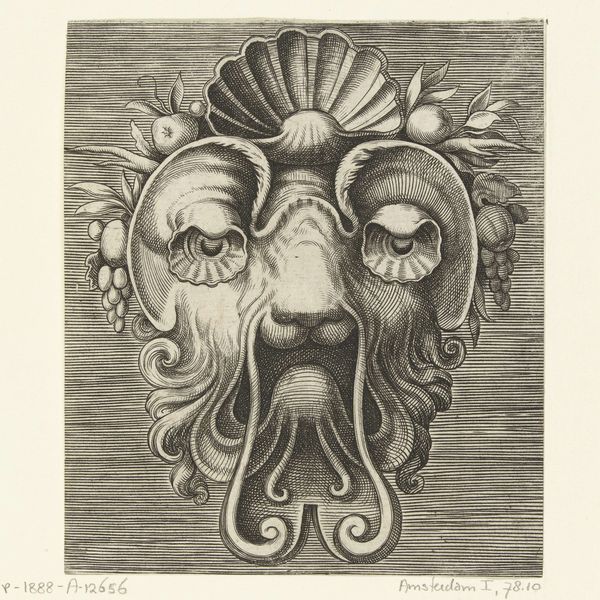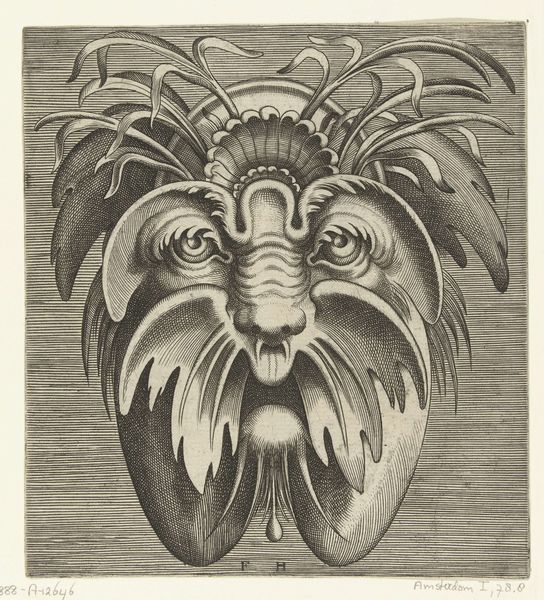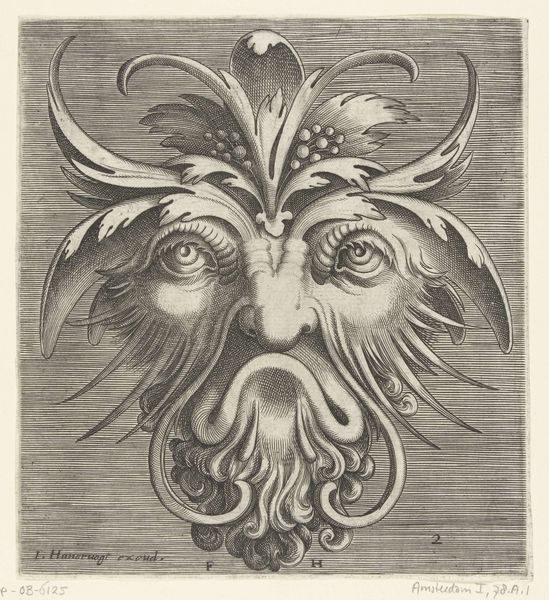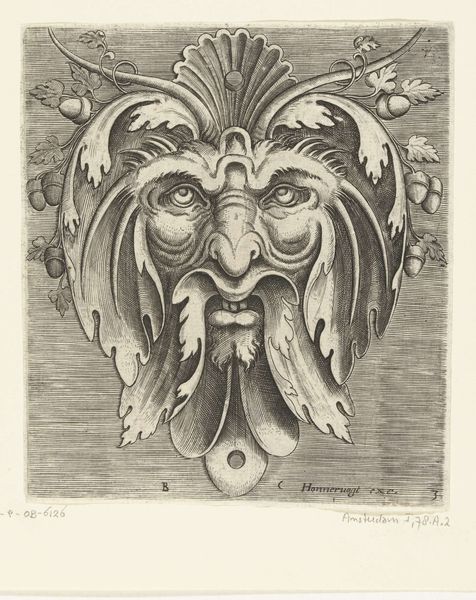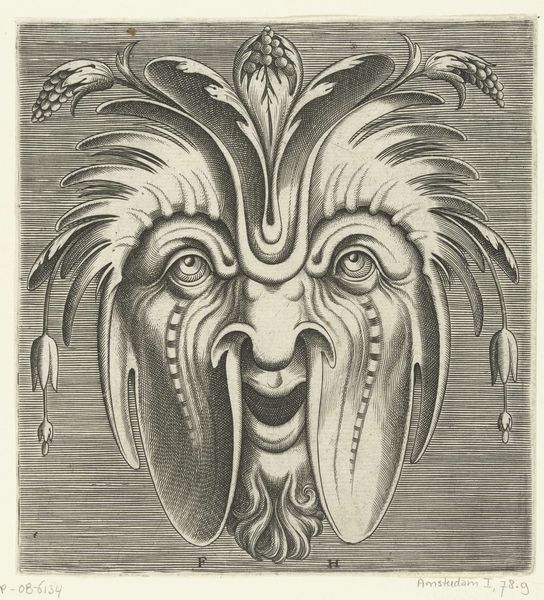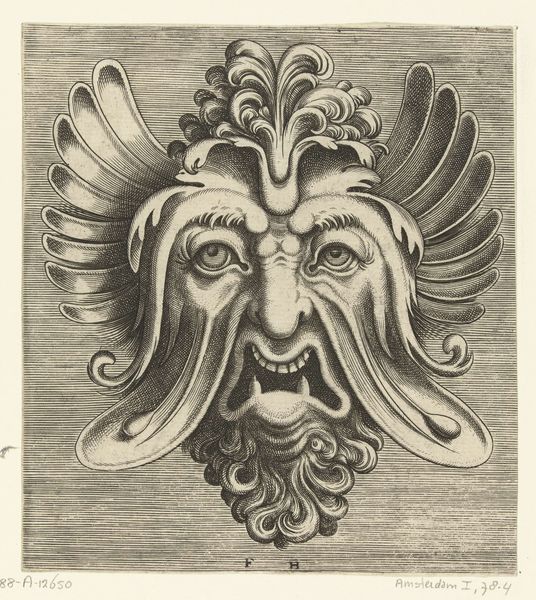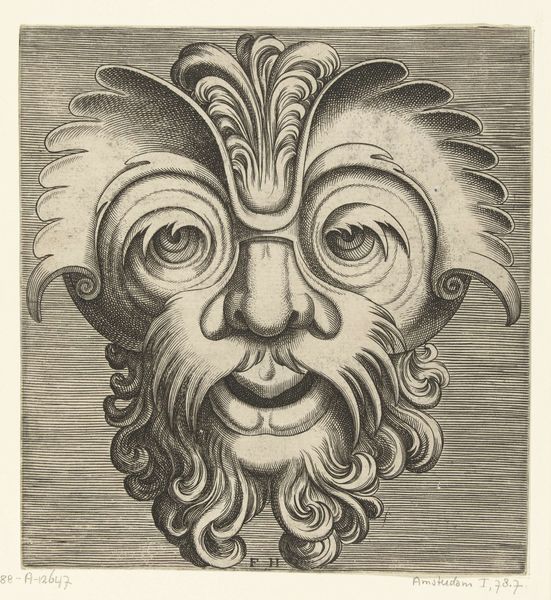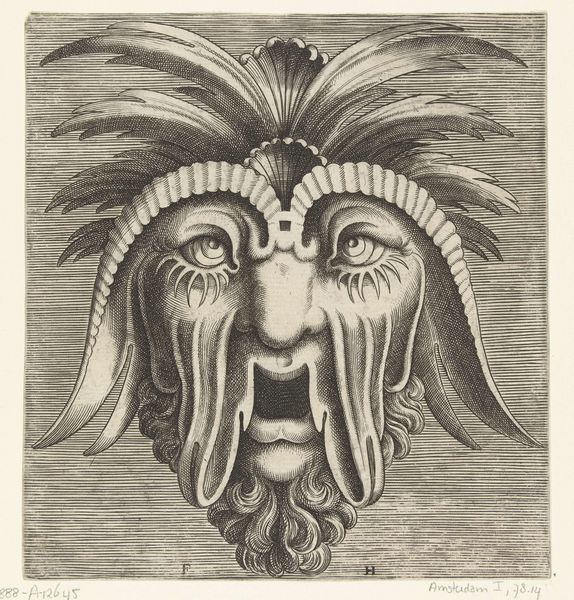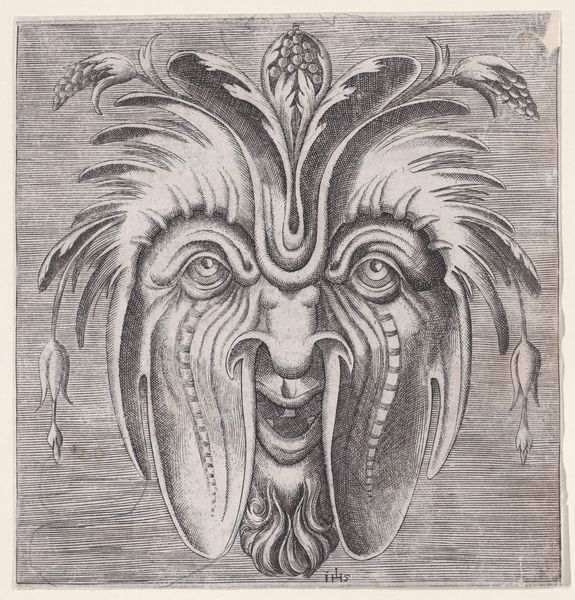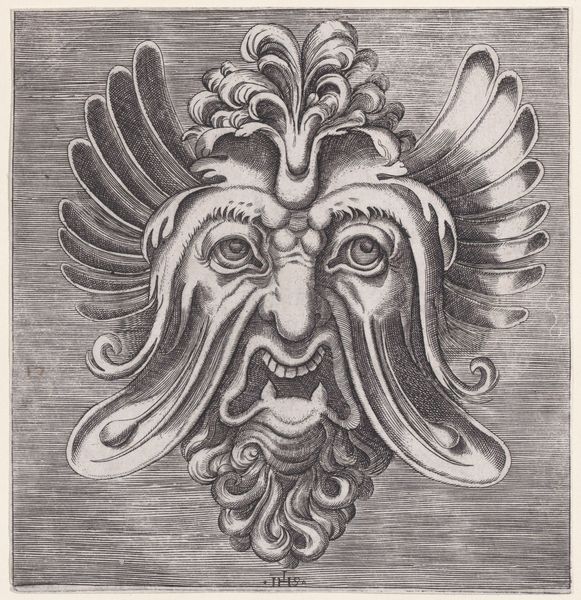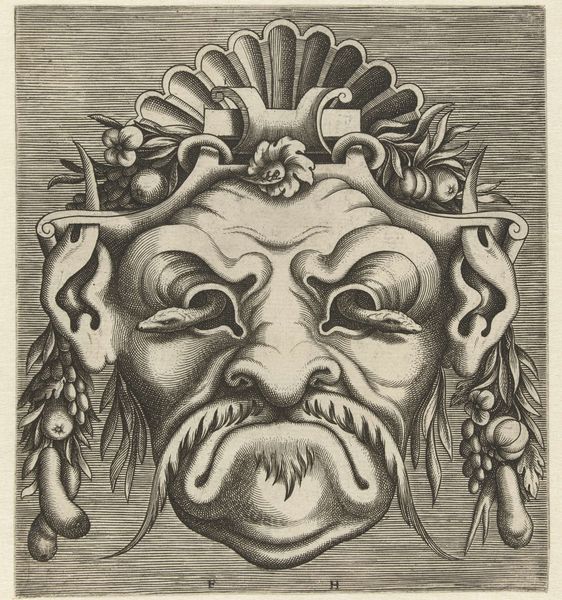
print, engraving
# print
#
caricature
#
11_renaissance
#
portrait drawing
#
decorative-art
#
engraving
Dimensions: height 157 mm, width 145 mm
Copyright: Rijks Museum: Open Domain
Editor: Here we have Frans Huys's "Masker met schotels rond de ogen en een toef krullen op het hoofd," from 1555, an engraving currently housed at the Rijksmuseum. I find this mask to be so bizarre. What do you see in this piece? Curator: Well, from a historical perspective, images like these masks weren't just decorations; they were deeply intertwined with the culture of collecting and knowledge. These kinds of decorative arts were very common during the Renaissance. Editor: Really? I always assumed masks were more… functional. Curator: Function was different then. Aristocrats collected these engravings. Prints were cheaper than paintings so, this also broadened audiences for decorative art. Think about it - how else would a global language of artistic motifs develop? These prints served as a resource for artisans, diffusing aesthetic trends. Editor: So, it's not just about decoration, but about how artistic styles circulated in the 16th century? The engraving technique meant that knowledge became way more public. Curator: Exactly. It questions how art shapes identity. Each mask, originally conceived, when printed en masse starts influencing public perceptions and even potentially becomes enmeshed in social or political dialogues of the time. Do you think this would be used as inspiration or be displayed? Editor: I never thought about engravings as tools for mass artistic communication like this, but I can definitely appreciate it much more as that now. Thanks! Curator: Of course. Consider how different things might be if all art objects stayed exclusive to their places of origin. It’s really about who gets to see and influence what!
Comments
No comments
Be the first to comment and join the conversation on the ultimate creative platform.


